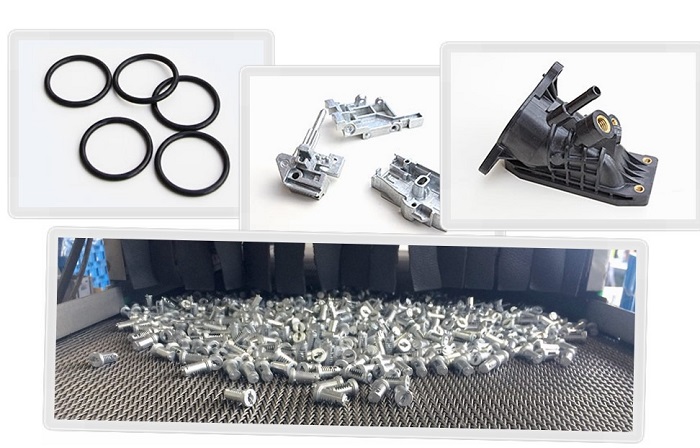You must Love Cryogenic Deflashing or Cryogenic Deburring Technology
Why We Love So Much on the Cryogenic Deflashing Machine
Molding s a common method to produce rubber goods today. And if you are a rubber moulder; I bet that, like any other manufacturer, you are constantly exploring technology for gains in productivity. And one area where you quickly stand to gain is in deflashing.
Your moulded rubber parts must undergo a finishing process to remove excess rubber flash before they are cleared for final inspection and packing. And this process is termed deflashing.
Most moulded rubber goods producers are currently deflashing manually. This means dozens of workers, seated at small work stations, would take each part and trim the excess rubber off with scissors, knives or grinders.
Obviously, this hand deflashing has several drawbacks. The quality of work done by hand is often inconsistent. This apart, as labour wages rise, your hand deflashing becomes expensive and unsustainable.
If you are manufacturing any of these –O-rings & gaskets, catheters and other in-vitro medical items, Insulators and other electric / electronic items, Valve stems, washers and fittings, Tubes and flexible boots, or Face masks & goggles; you too should love Cryogenic Deflashing as a ideal process to remove flash from your moulded rubber parts. Here’s why.

INTRODUCTION:
Deflashing machine also known as deburring machine. Though this cryogenic deflashing technology is in existence for over 50 years, its ‘practical introduction’ happened about 20 years back. Its popularity is on the rise in last 15 years.
This process uses liquid nitrogen, high-speed rotation and media (shot blast) in varying combinations to remove the flash in a highly precise, economical and practical manner.
There are two basic styles of cryogenic deflashing machine – basket and belt. The basket style was designed to process small parts and offers 100% parts containment. The belt style was designed for larger/heavier parts which require more room to tumble and a stronger rotation system.
CONSTRUCTION:
A typical cryogenic deflashing machine consists of a stainless-steel cabinet insulated with dense polyurethane foam. Located inside the cabinet are the blast chamber, the liquid nitrogen nozzle, and the opening for the throw wheel.
Plastic shots ranging size from 0.15 to 1.4 mm are deployed. These shots do not cause rust or part contamination. All major components of the machine (motors, bearings, etc.) are located inside of the cabinet and isolated from the temperature variations and moisture.
These are maintenance-friendly design and reduce component failure in your machine.
In your machine, there must be room within the blasting chamber for the parts to tumble because it is the tumbling action that exposes the parts to both the Nitrogen and the media stream. The actual size of the chamber should be at least twice the size of your load.
Manufacturers of cryogenic deflashing machines offers you options such as programmable controllers with numerous deflashing “recipes” for automatic operation, message centers, reporting, historical data etc.
THE PROCESS
Your moulded parts are placed in a perforated stainless-steel basket and inserted into a highly insulated blast chamber. Liquid nitrogen is injected into this chamber in which the basket with your moulded rubber parts is mechanically rotated to expose all parts to the blast media.
Liquid nitrogen lowers the temperature (some cases up to -130°C) while freezing the rubber to make it brittle. The physical properties of your moulded rubber parts are not affected during the deflashing process.
A unique high-speed (up to 7,000 rpm) impeller directs and throws plastic shots at the tumbling parts into the rotating basket. Travelling at high-speed, these small pellets cleanly trim off the brittle flash leaving a high quality, flash less molding. The machine separates reusable media from debris (flash and dust).
In some instances, cryogenic deflashing does not utilize a blasting action, relying instead only on the tumbling of the parts to remove flash on the outer edges.Parts that have thin flash can be quickly and thoroughly cryogenic deflashed.
Cryogenic Deflashing process is exceptionally good at removing the inner dimensional and complex flash in your products that cannot be removed by any other method.
The average cycle time can range from 1.5 – 10 minutes depending on the number of parts per batch (which is, dependent on the size of your moulded parts); flash thickness; wheel speed; and size of media used.

BENEFITS
While liquid nitrogen consumption could be a concern for some manufacturers, Cryogenic deflashing provides you various advantages over manual deflashing and other traditional deflashing methods.
§ Greater Productivity. Cryogenic deflashing trims parts in seconds.
§ Better Product Quality. The process maintains part integrity and critical tolerances.
§ Since it is a batch process, the price per piece is far less as many more parts can be processed in a given amount of time.
§ The process offers consistent results from part to part.
§ Cryogenic deflashing extends mold life. Rather than replace or repair a mold (which typically involves downtime and high cost), the parts can be deflashed. This is typical of parts molded at the end of their product lifetime.
§ Simple Operation. Highly automated, today’s cryogenic deflashing equipment is easy to use.
§ The process is computer controlled, therefore removing the human operator variable from the process.
§ Cryogenic deflashing is non-abrasive.
§ The cost per part is generally well below any alternative technique.
§ Environmentally Sound. The nitrogen cryogen can be recycled or vented safely to the atmosphere. In addition, cryogenic deflashing systems are typically enclosed to minimize noise.


